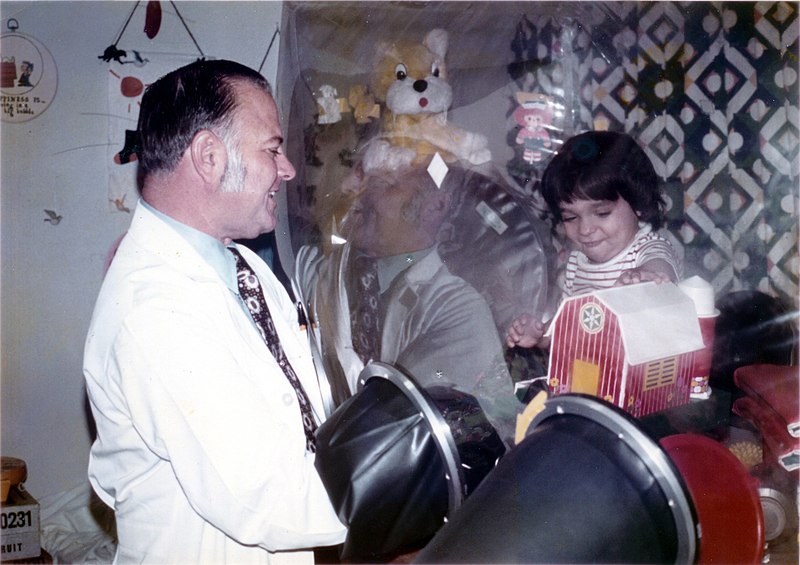Playlist
Show Playlist
Hide Playlist
Severe Combined Immunodeficiency (SCID) – Primary Immunodeficiency
-
Reference List Immune System.pdf
-
Download Lecture Overview
00:01 The worst type of primary immunodeficiency is SCID (severe combined immunodeficiency). 00:10 The title tells it all, doesn’t it really? It’s severe and it’s combined because it affects not only T-cells but also B-cells. 00:18 It’s due to mutations in one of a number of different genes involved in controlling cytokine signaling, or T-cell receptor signaling, or VDJ recombination of the immunoglobulin and T-cell receptor genes, or in metabolism. 00:34 There is a complete and total failure of T-cell development. 00:41 It affects approximately one child in every 80,000 live births. 00:50 There are severe defects in both cellular and humoral immunity. 00:56 The result is severe and recurrent viral, bacterial and fungal opportunistic infections. 01:04 And unfortunately without treatment, this condition is fatal within the first year of life. 01:09 Although there are a number of treatments that are available. 01:13 And the key thing about SCID is that there is a complete absence of T-cells. 01:19 There are a number of different genes that can cause SCID, and the particular genes that are involved will determine exactly which cell types are absent in the immune response. 01:30 But the common theme is there is always a absence of T-cells. 01:33 So if there’s a gene defect in the γC component of the interleukin receptors or in JAK3, the result is that there are no T-cells. 01:46 There are B-cells present, but there are no NK cells. 01:51 So this is referred to as T negative, B positive, NK negative SCID. 01:57 In contrast, if there is mutation in those other genes that you can see listed there, RAG1, RAG2 and so forth, then the result is T negative, B negative, NK positive SCID. 02:12 In other words, those children will totally lack T-cells and B-cells, but they do have NK cells. 02:19 The third group of genes that you can see there, the interleukin-7 receptor α-chain, CD3δ and so forth; defects in those genes will result in the T negative, B positive, NK positive phenotype of SCID. 02:35 In other words, there are no T-cells, but there are B-cells and NK cells. 02:39 And then the most severe of the severe immunodeficiency is the ADA and AK2 gene defects. 02:49 So defects in those two genes, will result in an absence of T-cells, an absence of B-cells and an absence of NK cells. 03:01 The γC defect and JAK3 defects, account for approximately 50% of SCID cases. 03:17 This results in an inability to signal through six different interleukin receptors, because those receptors all use the γC-chain of the interleukin receptors; it’s called γC, the C stands for Common, it’s common to six different interleukin receptors. 03:39 And they all use JAK3 as a signaling molecule. 03:44 And these six receptors are the interleukin-2 receptor, the interleukin-4 receptor, the interleukin-7 receptor, the interleukin-9 receptor, interleukin-15 receptor, and finally the interleukin-21 receptor. 04:03 All six using both the γC common chain of the receptor, and JAK3 signaling molecule. 04:11 So there’s no signaling from any of these six different cytokines, and that leads to this severe combined immunodeficiency.
About the Lecture
The lecture Severe Combined Immunodeficiency (SCID) – Primary Immunodeficiency by Peter Delves, PhD is from the course Immunodeficiency and Immune Deficiency Diseases.
Included Quiz Questions
Which of the following is the most common type of severe combined immunodeficiency?
- X-linked severe combined immunodeficiency
- Adenosine deaminase deficiency
- Purine nucleoside phosphorylase deficiency
- Reticular dysgenesis
- Omenn syndrome
Severe combined immunodeficiency is characterized by defective development of which of the following immune cells?
- T cells and B cells
- Neutrophils and T cells
- Neutrophils and B cells
- Natural killer cells and macrophages
- All immune cells
The immunodeficiency caused by mutations in IL-2Rγ is known as which of the following?
- X-linked severe combined immunodeficiency
- Purine nucleoside phosphorylase deficiency
- Reticular dysgenesis
- Omenn syndrome
- Adenosine deaminase deficiency
Customer reviews
5,0 of 5 stars
| 5 Stars |
|
5 |
| 4 Stars |
|
0 |
| 3 Stars |
|
0 |
| 2 Stars |
|
0 |
| 1 Star |
|
0 |




